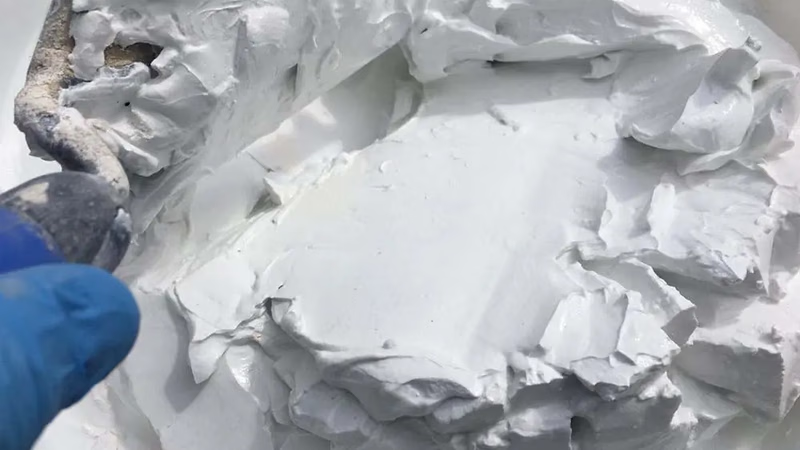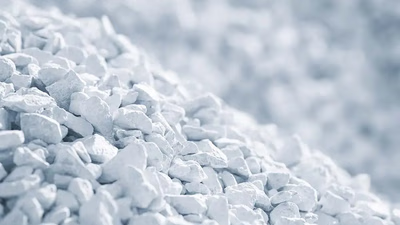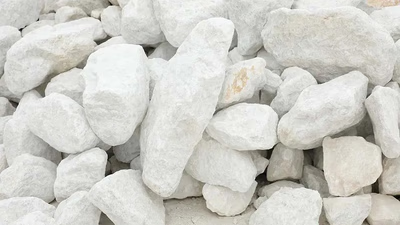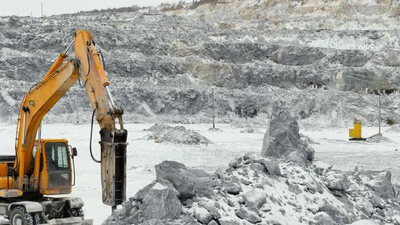
Lime"s role in construction and steel industries is vital. "
Since lime is found everywhere in the world and in all countries, lime is exported to many countries. Countries such as the United States, China, India, Russia, Iran and Brazil are among the main producers and exporters of lime to world markets. These countries have used their rich lime resources and can meet the international demand for lime. Lime has a significant export value due to its wide use in various industries. As an important source of calcium oxide (CaO), lime is used in the production of cement, steel, glass, paper, chemicals and other industries. Therefore, countries that have rich resources of lime can export to world markets as suppliers of lime.
The chemical formula of lime is CaO. Lime is a chemical compound known as calcium oxide. Lime is used as an alloying material in steel production. Calcined lime is used as a molten material in the process of steel production and exhaust gas purification. Therefore, the steel industry in countries with high steel production can lead to the export of lime. Lime is used as a main ingredient in glass production. Calcined lime is used as the main material in the process of glass production and regulation of glass properties. Countries that have a strong glass industry can produce and supply lime as an export product. Lime is used as a main ingredient in the production of building materials such as cement, mortar and limestone. Cement and mortar are used as the main materials in the construction and repair of buildings.
The most and most important application of lime is in the construction industry and cement consumption. Lime is used as a raw material in the production of cement. In the cement production process, lime along with other limestones and raw materials such as limestone ash and aluminum ash is thermally calcined to convert into calcium oxide (CaO). Calcium oxide is then converted into calcium hydroxide (Ca(OH)2) and other cement compounds by using other citrus fruits and raw materials, along with water. This process plays a vital role in the production of cement and is widely used in the construction industry as the main ingredient of cement.
Cement is one of the basic materials in construction and is used in making concrete, mortar, cement spraying and all kinds of building structures. Also, cement is used as an important factor in various industries such as water and sewage industry, oil and gas industry, and food industry. The use of lime in the production of cement and the wide use of cement in the construction industry are considered as the most and most important use of lime.
The second most important application of lime is in the steel industry. Lime is used as an alloying material in the steel production process. In steelmaking, lime in the form of calcium oxide (CaO) or calcium oxide is used as an active substance in absorbing impurities and pollutants in steel refining processes. In the process of steel production, lime is created as an alloy material in raw materials including iron ore, coke and limestone. Lime combines with impurities in iron , such as silica (SiO2) and phosphorus (P), to form insoluble compounds such as calcium silicate (CaSiO3) and calcium phosphate (Ca3(PO4)2). These insoluble compounds in metal form lava and are separated as inclusions or slag.
Production and export of lime to countries with active construction and strong cement industry can have an export advantage. Lime is used as a material used in the water and sewage industry. Lime is used as a purifying agent in the water and wastewater treatment process. Therefore, exporting lime to countries in need of advanced water and wastewater treatment technologies can be profitable. Lime is used as an alloying material in paper production. Lime is used in paper bleaching process and paper pH control. Countries with a strong paper industry can provide the necessary raw materials to this industry by producing and exporting lime.
-

The lime market in West Asia is experiencing significant growth due to increasing demand from the construction, cement, and chemical industries. Key factors driving this demand include population growth, infrastructure development, and civil projects. Major producers in the region include Saudi Arabia, Iran, Iraq, Qatar, Oman, Turkey, and Egypt, which are known for their rich limestone deposits. Saudi Arabia stands out as a leading global producer with substantial reserves in regions like Hafr al-Batin and Ha"el. Oman’s Jabal Al-Akhdar is also notable for its limestone resources. The competitive landscape is intense due to numerous local producers and importers, which can lead to price pressures and quality challenges. To enhance competitiveness, improvements in product quality and production processes are essential. Transportation issues such as inadequate infrastructure and security concerns pose additional challenges for lime distribution.
Countries like Pakistan also play a role in the regional market by exporting lime to neighboring nations. Regulatory differences and security issues further complicate international trade within West Asia. Addressing these challenges through better customs facilities and unified regulations can facilitate smoother trade operations. Ultimately, maintaining high quality and competitive pricing will be crucial for producers aiming to secure their market position amidst fierce competition. "
-

China, India, the USA, Russia, and Brazil are the largest consumers of lime globally, driven by their industrial sectors such as construction, steelmaking, and agriculture. These countries possess significant lime mineral reserves and typically meet their domestic demand through local production. However, they may also import lime to satisfy higher demand. Engaging in industrial exhibitions related to the lime industry offers opportunities for networking with international buyers and exchanging valuable insights. The process of lime extraction involves identifying mines, conducting geological explorations, and utilizing various methods for extraction and processing. After extraction, lime is crushed, prepared, and packaged for distribution to various consumer industries. E-commerce platforms like B2B marketplaces facilitate direct connections between lime producers and global buyers by allowing them to publish product specifications and negotiate deals. Additionally, leveraging foreign trade services can enhance access to international markets. Establishing business relationships through conferences and industry events is crucial for expanding market reach.
-

China, Russia, and India lead global lime production, with significant reserves in regions like Henan, Ural, and Rajasthan. The United States and Japan also contribute notably to lime supply. Various forms of lime, including raw, hydrated, calcined, and transgenic lime, serve diverse industrial applications such as construction and agriculture. Hydrated lime is particularly in demand due to its versatility. High-quality lime, known as "White Lime," is sourced from Italy"s Carrara region and Mexico"s Yucatan region, recognized for their purity and exceptional properties. Vermont in the U. S. and Finland"s Pargas area also produce high-quality lime used across multiple industries.
Understanding these regional strengths can enhance trade opportunities within the Middle East and West Asia markets. "
-

Lime, a crucial chemical compound (CaO), is extensively exported by major producers like the US, China, India, and Brazil. Its significant export value stems from its diverse applications across various industries. In construction, lime is essential for producing cement, mortar, and other building materials. The cement industry heavily relies on lime as a raw material during the calcination process, making it vital for concrete production and infrastructure development. Additionally, lime plays a key role in the steel industry as an alloying agent that helps purify steel by absorbing impurities during refining. Its use extends to glass manufacturing, where it regulates properties and enhances production processes. Furthermore, lime is utilized in water treatment facilities as a purifying agent and in the paper industry for bleaching and pH control. Countries with abundant lime resources can leverage these applications to boost their export capabilities and meet international demand effectively.




